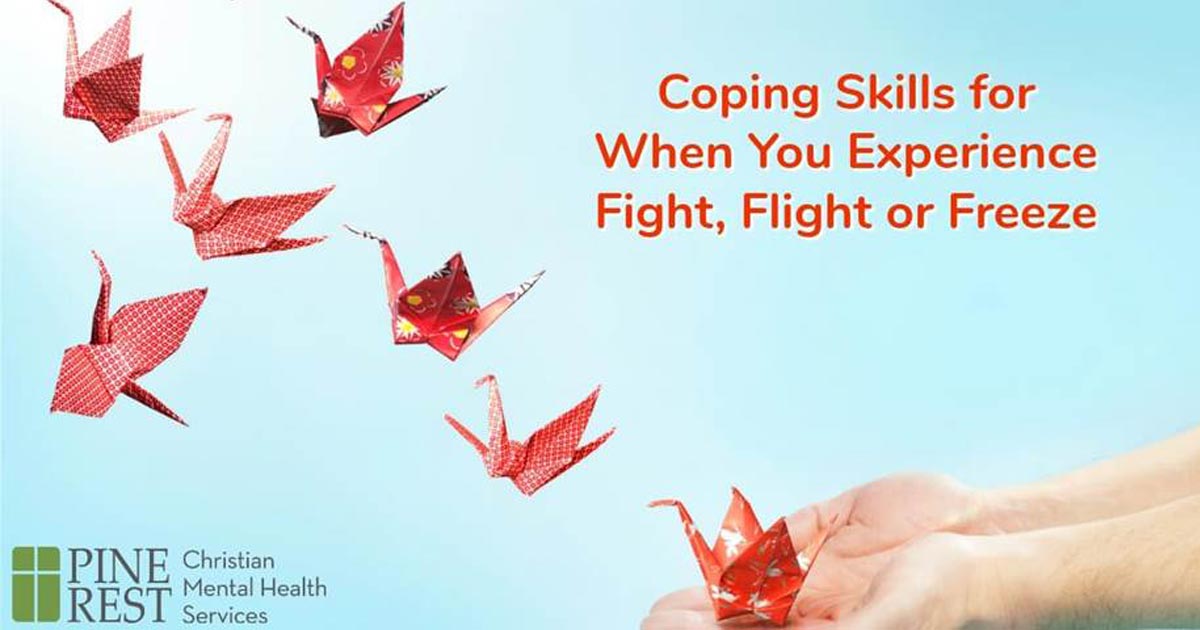Nearly everything about life seems to have changed this year—and rather quickly. Our worries, anxieties and fears (WAFs) are much more present, and many of us are experiencing WAFs we never have before nor expected to. Perhaps, at this very moment, your brain may be having some trouble—or even some panic—trying to figure out what you'll do about this next set of changes you're facing and the challenges (and maybe even fear) they create.
What's Happening, Neurologically Speaking:
Bear with me for a moment as we go down a road of a brief introduction to neuroscience. Our neocortex—or prefrontal cortex—is a part of our brain that likes and needs accurate information. Without it, we experience uncertainty ... uncertainty of what's to come, what the future may hold, and uncertainty of how long our "normal" life may be disrupted.
When the prefrontal cortex or 'thinking" part of our brain can't seem to make sense of what is, when it can't problem solve for the future, the body will often respond with panic. It's at this point we start to move into the "alarm" portion of our brain called the amygdala.
Our amygdala is constantly scanning for a threat and will often interpret a perceived threat as a real threat. Our sympathetic nervous system activates a fight, flight or freeze response. The amygdala can override our cortex or "thinking brain," which is why it can seem like we can't think our way out of our WAFs.
Fight, flight or freeze may look like:
- Difficulty breathing
- An increase in heart palpitations
- Shortness of breath
- Muscle tension (shoulders, traps, chest, neck, jaw)
- Feeling hot or flush
- Headaches
- Nauseous
- Diarrhea
- Tingling in fingers or toes
- Tunnel vision
We can recognize these as symptoms of our body being stuck in the sympathetic nervous system, i.e., in a state of panic, fight, flight or freeze. We need to practice coping skills that can calm our body and mind down, so that we can get back to our thinking brain.
Some of my favorite coping skills to use when in a state of panic or when we notice these physical symptoms of anxiety in our body include:
1. Deep Breathing or Belly Breathing.
We can lay down on our floor, sit in our chair, stand straight, and practice this skill anywhere. We want to take deep breathes where our belly actually expands instead of our chest. We can make it fun and practice this with our kids, too!
2. Grounding Exercises.
In these exercises, we focus on what is going on in our body or in our immediate environment instead of getting stuck in the downward spiral of our thoughts.
My favorite grounding exercise is called "5, 4, 3, 2, 1" where we use all five of our senses to ground. For example, I will name:
- 5 THINGS I SEE in my environment around me: my desk chair, bookcase, glass of water, stapler, computer screen.
- 4 THINGS I FEEL: my hair, my back pushing firmly into my chair, my feet planted on the ground, the couch I am sitting on.
- 3 THINGS I HEAR: my kids in the background, my fingers typing away at my computer keys, and the sound machine in my office.
- 2 THINGS I SMELL: my lemon candle, the soap I washed my hands with.
- 1 THINGS I TASTE: peppermint in my mouth. If you don't have access to taste you can, say one calming mantra such as, "Just breathe" or "No feeling is final."
3. Guided Imagery or Guided Meditation.
We can use our five senses again to describe a place that represents still, calm, peace. We can describe what we see, hear, feel, smell, and taste. We can imagine ourselves by the beach or in a forest, I even have one client who describes himself in space.
4. Self Soothe Through Temperature.
Take a hot shower or bath, hold ice, or use a heating pad.
5. Practice "RAIN."
One of my favorites that we can also practice comes from Judson Brewer, a psychologist considered an expert in the field of anxiety. Often times, we are trying to run or escape our anxious thoughts and he argues against this. We can use this skill once we have calmed our body down using skills above. The quick and dirty of his skill called RAIN is:
- Recognize/Relax: Recognize what is arising inside of us (muscle tension, a "what if" thought).
- Accept/Allow: Give it space to be there instead of running or distracting from it. This is your experience and allow it to be present.
- Investigate: What does my body feel like right now? What thoughts may I be experiencing? What is happening in my mind? What am I feeling?
- Note/Not attach: Note the experience. I am having these thoughts or these feelings, but I am not my thoughts and feelings—they are transient and can come and go.
I hope these skills can help in this time. Make space in your day-to-day habits and routines to check in with your body and mind. Stand up from your desk and do a 30 second grounding exercise, practice belly breathing with your kids, take a moment to notice if there are any areas in your body that are tense and try to relax them.
Remember, our thoughts are transient—they come and go. We do not have to believe everything we think. Be kind in your thoughts, recognize when your thinking brain is starting to "shut down" and show some compassion and kindness to yourself by practicing some of the above exercises.
For more articles on stress management from Pine Rest, visit pinerest.org/stress.
 Written by Kelly Boprie, LMSW, Pine Rest Christian Mental Health Services
Written by Kelly Boprie, LMSW, Pine Rest Christian Mental Health Services
Courtesy of Pine Rest Christian Mental Health Services.




